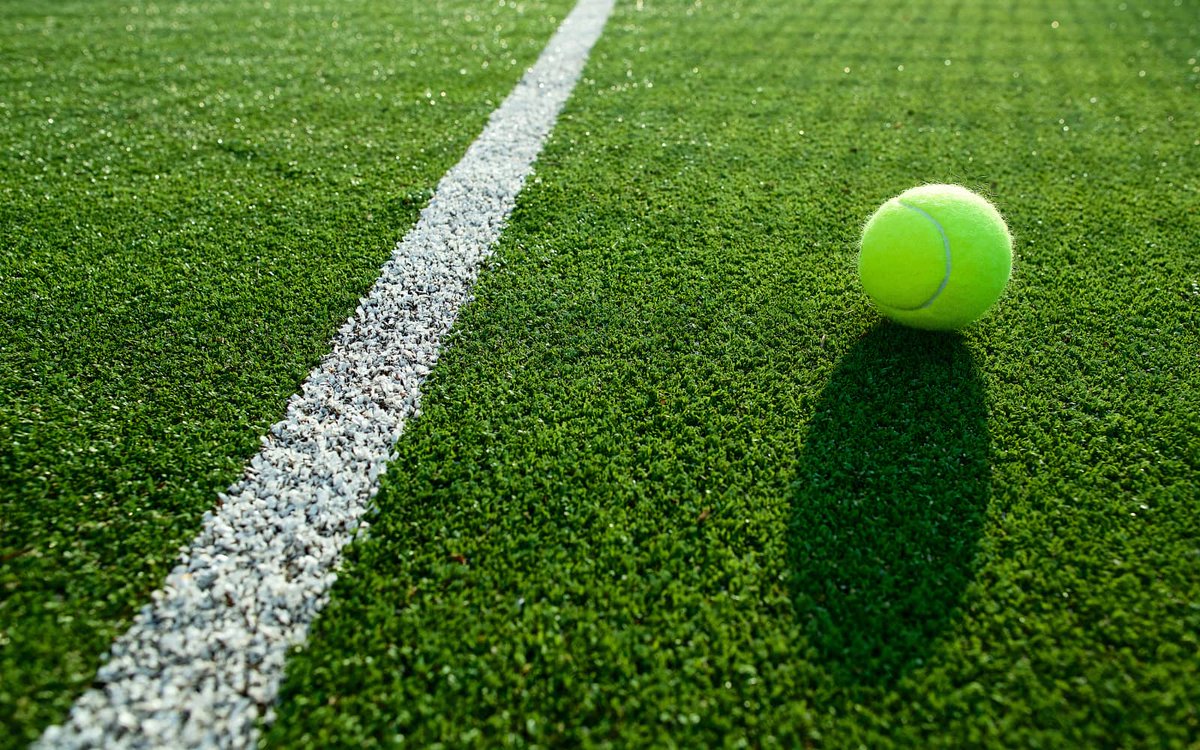Tennis, a game known for its elegance and precision, is played on a carefully designed court with a set of distinct markings called tennis court lines. These lines serve a crucial purpose, defining the boundaries of the game and ensuring fair play. In this article, we will delve into the world of tennis court lines, explaining their significance and unraveling their evolution from traditional standards to modern innovations. From the historical origins of court lines to their strategic importance in gameplay, we will explore how these markings have shaped the game of tennis and continue to influence the way it is played today. So, let’s dive in and have tennis court lines explained in detail.
Evolution of Court Lines
The evolution of tennis court lines has been instrumental in enhancing the accuracy and fairness of the game. Originally marked with chalk or lime, court lines have come a long way in terms of precision and consistency.
Governing bodies like the International Tennis Federation (ITF) have established specific guidelines to standardize court dimensions and line placement, creating a comprehensive Tennis Court Lines Guide With Images. These regulations ensure uniformity across tennis venues worldwide. With technological advancements, court lines are now commonly marked using durable synthetic materials like acrylic or latex-based paints. This allows the lines to remain visible and intact for extended periods of play.
One notable innovation in recent years is the introduction of technology-driven line-calling systems. These systems utilize cameras and sensors to track the ball’s trajectory, providing accurate information on whether it has landed within the court boundaries. This has significantly reduced the margin of error in line calls, making the game fairer and more transparent.
To aid players, officials, and spectators, comprehensive guides accompanied by images have become readily available. These guides serve as a valuable resource, providing a visual representation of the court’s dimensions. They illustrate key elements such as the baseline, service lines, sidelines, and center service line, making it easier to understand and navigate the court accurately. By referring to these guides, players can strategically position themselves during matches, while officials can ensure accurate line calls.
Colored Lines for Enhanced Visibility
In the world of tennis, the visibility of court lines plays a crucial role in ensuring fair play and accurate line calls. To address this, innovative solutions such as colored lines have been introduced, revolutionizing the way tennis court lines are perceived and referred to.
Traditionally, tennis court lines were white, contrasting against the green surface of the court. However, this color combination sometimes posed challenges in visibility, particularly under certain lighting conditions or for players with visual impairments. To overcome these issues, colored lines have been implemented, providing enhanced visibility and clarity during matches.
Different tennis court lines names have been assigned to these colored lines to distinguish their purposes. For instance, the baseline, which marks the farthest point at the back of the court, may be referred to as the “backline.” The lines that divide the service boxes and extend to the sidelines are commonly known as the “service lines” or “service box lines.” Additionally, lines that mark the width of the court and run parallel to the baselines are often called “sidelines.”
The introduction of colored lines has brought numerous benefits to the game. These vibrant lines create a stark contrast with the playing surface, making it easier for players, officials, and spectators to track the ball’s trajectory and determine whether it lands within the court boundaries. Moreover, colored lines also facilitate better depth perception, aiding players in executing precise shots and strategic placements.
Significance in Gameplay Strategies
The lines on a tennis court, commonly known as “lines on tennis court,” play a pivotal role in shaping gameplay strategies and influencing the decisions made by players during a match. These lines act as boundaries that define the playing area and provide valuable positional cues for both offensive and defensive tactics.
One of the primary strategic considerations is the positioning relative to the lines on the court. Players strategically use the lines to their advantage by positioning themselves strategically along the baseline or within the service boxes. The baseline serves as a reference point for players to gauge their distance from the net and adjust their shots accordingly. By hugging the baseline, players can exert more pressure on their opponents and maintain control over the court.
Additionally, the lines on the tennis court serve as visual cues for shot placement. Players often target specific areas within the court, such as aiming for the corners between the sidelines and service lines. By utilizing the available space within the lines, players can create angles and force their opponents into difficult positions, gaining a competitive advantage.
Furthermore, the lines on the court play a crucial role in defensive strategies. Players use the lines to position themselves optimally, taking into account the trajectory of incoming shots and adjusting their court coverage accordingly. By using the lines as guides, players can effectively anticipate their opponents’ shots and respond with well-timed movements.
Court Lines in Professional Tournaments
In professional tennis tournaments, adherence to the proper placement and naming of court lines is of utmost importance. The tennis court names of lines, such as the baseline, service lines, sidelines, and center service line, are standardized to maintain consistency across different tournaments. Officials meticulously ensure that the court lines are accurately marked and meet the required specifications. Any discrepancies or deviations can result in disputes or challenges during matches. By maintaining the integrity of the court lines and following the established tennis court names of lines, professional tournaments uphold fairness and provide a level playing field for all competitors.
















